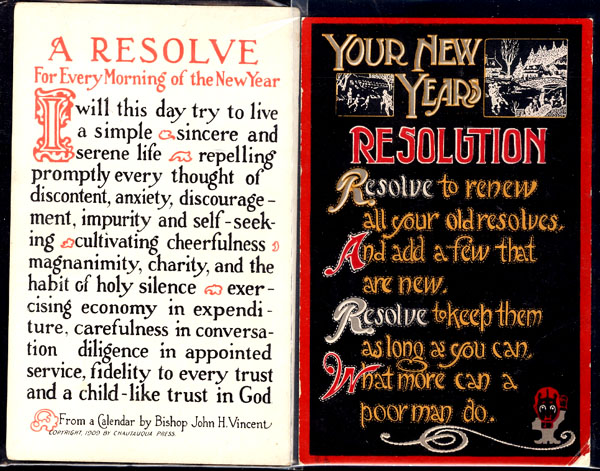We have created a culture in which distractions have taken primary focus. The purpose they serve is clear; to distract us from remembering the fact that one day, no matter the wealth, circumstance or favor we may enjoy in our lives, all of us will die.
So we watch.
After less than a century of television’s existence, it has fully embedded itself into our daily lives, becoming an integral part of most American homes. Building on its’ success, TiVo has revolutionized what was thought by many to be a dying technology. No more worrying about setting VCR times, buying tapes, or even having to be awake to watch something. Via our 24/7 multi-satellite and multi-cable connections, we can record hours and hours of shows to watch, and the networks have been more than happy to adapt by replaying most of their popular programs in different time slots and on sister networks to ensure that you will never have to miss a thing (for example, the recent season finale of Rock Of Love: Charm School was replayed more than 20 times on Viacom’s channels during the week it was aired). In the past 10 years, reality TV has exploded, with hundreds of shows catering to almost every possible niche of popular culture. This year, almost as many people voted for the winner of American Idol as voted for the President of the United States. Since CNN started the trend, 24 hour news has given us stories that would never have received mainstream attention before, leading to more news creation and less news reporting. Constant streams of information, always something to watch, always something happening.
Innovation in the tech industry of the 90’s led to the generation of a consumption-based economy on the internet. Prior to the late 90’s, the internet was mostly used by the government, students, teachers and professionals in order to achieve specific aims. Email and IM were popular, but not prevalent. Even at its height, the internet as many of us knew it back then was still something only middle class nerds were fooling around with. LiveJournal and Friendster ushered in the concept of social networking, but it was MySpace that truly launched the idea into the mass market. Facebook, LinkedIn, Bebo, Hi5, Orkut and many others have all had various levels of success. Just as with reality TV, it appears that there is a service for every possible niche. Countless ways to connect your life with the global network around you. Constant streams of information, always something to watch, always something happening.
There was a time when cameras were bulky and expensive, limiting their use mainly to the wealthy mavens of Hollywood and highly skilled professional photographers. In the past decade especially, this once unreachable medium has become available and affordable to nearly everyone. Digital cameras and camcorders are cheap, and in many cases, embedded in other common products such as cellphones and laptop computers. Where social networking has created a place to interact, social media became the companion piece; a way to visually document our lives, to share it with others. The success of Flickr and YouTube – as well as of all the clones to follow in their wake – has given rise to an even richer experience, a more effective method of engaging others. To ensure that you never miss a thing, you can subscribe to customized RSS feeds of all your favorite sources of information, no matter what form it takes. Constant streams of information, always something to watch, always something happening.
With internet connection speeds increasing exponentially in the past decade, it’s now possible to stream high definition video, audio and pictures almost instantaneously. Gone are the days of waiting minutes or hours for relatively small files to download, in its place the immediate gratification of always-on, instant data. Cell phone popularization in the past 10 years has transformed mobile phone use from a luxury into a near-indispensable commodity, bringing this instantaneous data streaming device to even those without any truly disposable income. Not only have the devices become more common, but the networks hosting them have become far more complex, evolving from dicey basic phone reception to full-featured internet access. In the age of Blackberries and iPhones, you never have to be more than a touch away from all the world has to offer. Constant streams of information, always something to watch, always something happening.
So where does all of this leave us? More on that in a bit. First, let’s take a break to explore a tangent.
Andrea Dworkin is infamous for popularizing the idea that pornography has been responsible for an increase in rape and violence against women. In her book, Pornography – Men Possessing Women, she attacks the adult industry for its use of violence and degradation in order to sell a product – mainly the idea of a male-dominated world in which women functioned as on-demand fantasy-fulfilling submissives. Granted, Dworkin was a staunch feminist, but there is some truth in the arguments she made. Much of her criticism of pornography was written in the 1980’s, and in the quarter century since, many phenomena have occurred not only to support her arguments, but to surpass what were probably her worst fears motivating her to speak out in the first place.
The adoption of the internet as an indispensable component of our daily lives brought with it an inevitable eventuality; a massive explosion of the interest in – and consumption of – pornography. As the tools became available to us to sequester ourselves in a room, alone, with no fear of judgment, and to gather discreetly with others with a common shared interest, every possible sexual indulgence and fetish became not only possible, but probable. Gonzo. Scat. Water sports. The 2 Girls, 1 Cup video went viral. Jokes about a Dirty Sanchez, Donkey Punch and Cleveland Steamer are all present in recent blockbuster (i.e. mainstream) comedies. Pornography has become acceptable and even perhaps encouraged in modern society. There are elements of it present in all of the media mentioned earlier; Tila Tequila takes “A Shot At Love” by making out with attractive men and women in a hot tub, the “MySpace whores” of the younger generation post scantily clad pictures and videos of themselves dancing seductively on their profiles and ads appear on late night TV with some breathy siren imploring you to text her in order to get in on an all-night text party that’s happening somewhere at this very moment.
Female seduction has become less about the mystery of a woman and rather about sexual violence. Nowadays there is seemingly no end to the sacrifices women will make to be seen as sexually desirable, from painful and irreversible plastic surgery procedures to LUG/BUG experimentation to the types of pornography listed above. Interestingly enough, these phenomena are not common in homosexual, lesbian or other types of pornography, which seem geared more towards -philia, or “the love of” their chosen subject, rather than the desecration of it. Certainly this is an extension of the Biblical concept of wives submitting to their husband’s authority. When a woman is seen with a group of men ejaculating on her face, or being defecated upon, or urinated upon, or beaten, choked or pretending to be raped, it is seen as arousing and even acceptable by an increasing number of people. Yet pictures of a child clothed in underwear (not nude) will get you jail time. It’s not that child pornography should ever be considered acceptable. The more pertinent question is, why are we so indifferent to the types of self-degradation women are allowed to experience for the enjoyment of the public at large? Aren’t all of us equally deserving of respect and dignity? One of the top searches on Google is “Bang Bus” (and has been ever since the site’s inception). The entire premise of that website is that a woman in distress is picked up off the street, offered money in exchange for sex, then is dropped off in an unknown area with a laugh, money thrown at her feet. Whether it is real or scripted is irrelevant. The human mind reacts to stimuli whether it is actual or perceived, and it is not hard to see how something like the Bang Bus could be perceived as society’s acceptance (and perhaps encouragement) of bargaining away your self-worth in exchange for transient things like money and fame.
So how is this tangent relevant to the initial point?
What has happened in the pornographic industry certainly speaks to Dworkin’s perspective of its effect on how women are treated, but I believe that she was diagnosing a symptom of a much larger problem. This tendency of humankind to watch no matter what the cost to others and to ourselves has been mirrored in much of modern life. “MySpace whores” will do anything for attention – lying about their age, taking pictures from flattering angles, flirting with strangers – hoping that someone will value them in ways that they have not been able to value themselves. They put videos up on YouTube, sometimes embarrassing and exposing themselves in the moment without fully realizing the potential consequences. Pictures of people getting drunk and high at last night’s party are posted on publicly-viewable profiles for the world to see. Status updates are sent across social networking sites to keep everyone informed of the latest adventures and drama in your life. More often than not, people are willing to go to great lengths to be noticed, and we are willing to go to great depths in order to watch them.
George W. Bush made many mistakes as President (and will certainly be remembered for them), but chances are that more people watched a shoe being thrown at him than watched any of his State Of The Union addresses (i.e. his job). While the man performed poorly in office, there is a basic human dignity that is lacking in seeing something like that replayed time and again. We enjoy watching the mighty fall. Britney Spears, bald, wielding an umbrella, pushed to a breaking point. Lindsay Lohan passed out drunk in the passenger seat. Paris Hilton giving a mediocre blowjob. Celebrity Rehab. The Smoking Gun. Our world no longer has a flag being raised at Iwo Jima. No Alberto Korda documenting the steely resolve of Che Guevara. The memorable images of our time are not important historical moments that happened to be captured. Instead, we are left with photo ops that are created for the sole purpose of public opinion manipulation (insert “Mission Accomplished” banner here), moments of catastrophe and failure which are replayed ad infinitum (9/11 anyone?), embarrassment (the celebrities mentioned above) and quite frankly, the majority of these images exist merely for our own enjoyment, to re-watch and re-live at our leisure. While it may not be acceptable to masturbate to a plane flying into the World Trade Center, there is a part of us that sees it as being no different than a Michael Bay movie; tantalizing action sequences that get your adrenaline pumping. We forget about the people dying in front of our eyes. We are desensitized by the very act of watching. We forget that these people are as human as we are, with hopes, dreams, families, friends, colleagues.
But these are big, heady ideas and hardly relevant to your life, right? Well…
Imagine the last time your child was in a pageant or play. Were you watching them perform, or were you recording it? You go to a concert to see your favorite band play. Are you updating your Twitter, Facebook and MySpace statuses, submitting mobile photos and videos taken on your cameraphone, or are you watching the band play? You’re in mixed company and there’s an awkward silence or lull in the conversation. Do you try and discover new and interesting things about the people you’re with, or do you play on your Blackberry or iPhone? You’re on vacation, maybe even your honeymoon. Do you shut your phone off, or do you keep it by your side at all times?
These are walls; barriers to existence. We all have 5 physical senses in which we experience the world, in which we are able to absorb data for our minds to process. The thought of losing any one of those senses is be unbearable for many of us, yet when was the last time you’ve really seen someone, heard them, smelled them, touched them, even tasted them? There is a delicate beauty that runs through much of the life on this planet, which is what the old adage “stop and smell the roses” is all about. But we are all conditioned to believe that we are missing out on something. There’s always that constant stream of information, always something to watch, always something happening. But very few of us actually require constant contact and notification (think: doctors). So when I am having coffee with a friend, something inside them forces the need to know exactly what is going on, even if it’s just a notification that a friend has “poked” them. In the physical world, they don’t look at me, they don’t hear me and they don’t touch me, as those senses are all dulled and distracted by the act of watching something else. Usually I have half their attention and find myself often needing to repeat what I’ve said.
It may seem a stretch to compare violent pornography to being poked on Facebook, but ultimately, the idea is that there is less appreciation for the humanity and beauty in this world because of the things we choose to watch, and to a lesser extent, participate in. It’s not about the morality of one thing vs. another, it’s not about the severity of one act vs. another. In all the behavior mentioned here, there is a subtle murder, a subtle suicide happening. Not a direct and final one, to be sure – nobody is actually dying from reading TMZ. But we all have a finite amount of time on this planet and absolutely no idea when it will end. The next time you are in the presence of someone you love, it may be the last time you see them. This is an uncomfortable truth we collectively ignore. But really, does anyone on this planet want to die wondering if they were truly cared for? If someone close to you were to die and you passed up an opportunity to see them in order to stay at home and catch up on Perez Hilton, would it be one of your haunting regrets in life?
If you’re ever in my presence and you hear my cell phone ring, maybe you will now understand why I ignore it.




